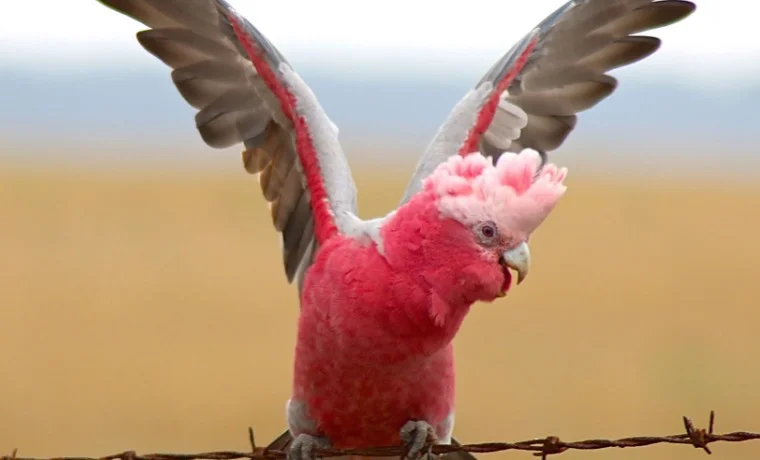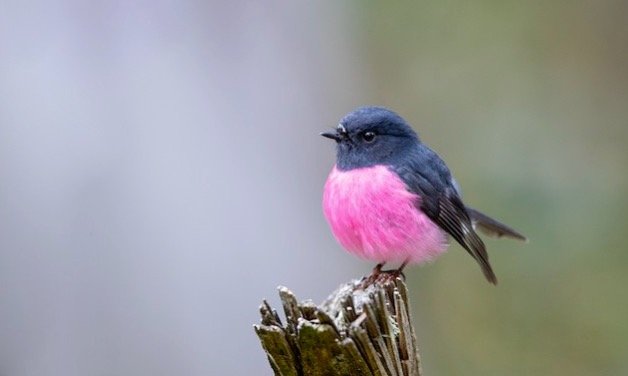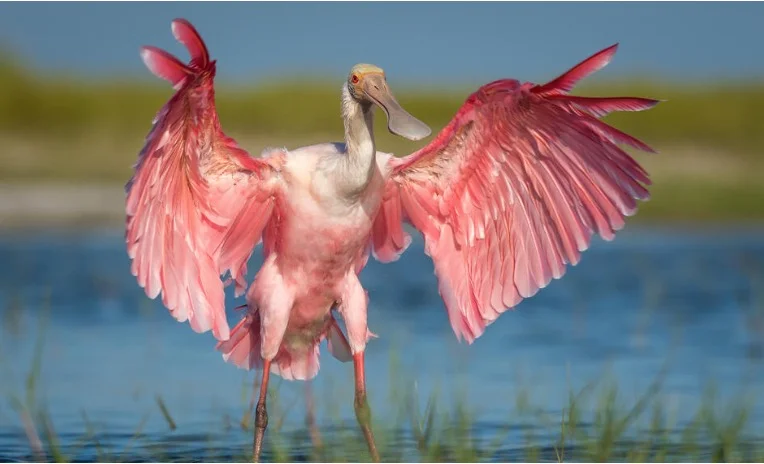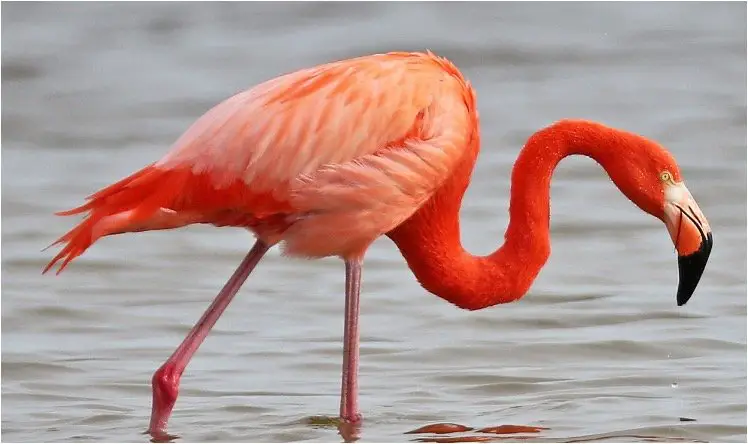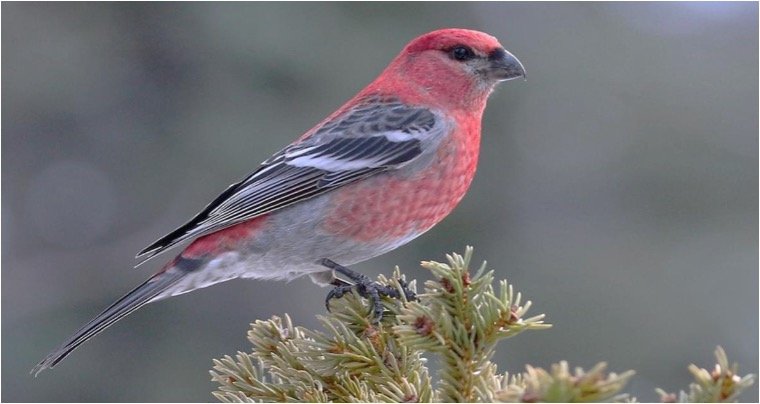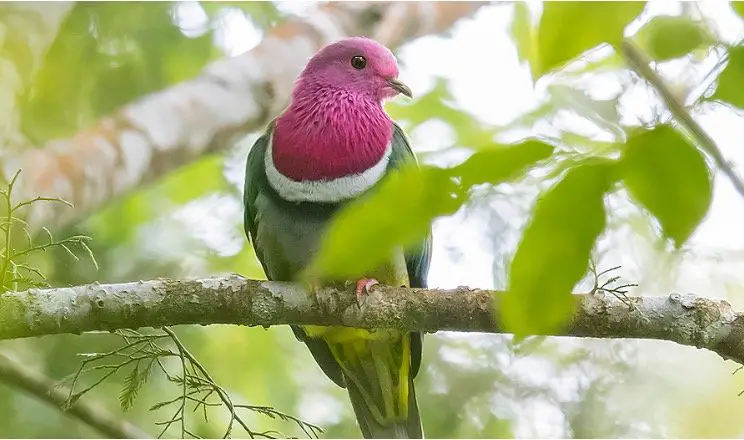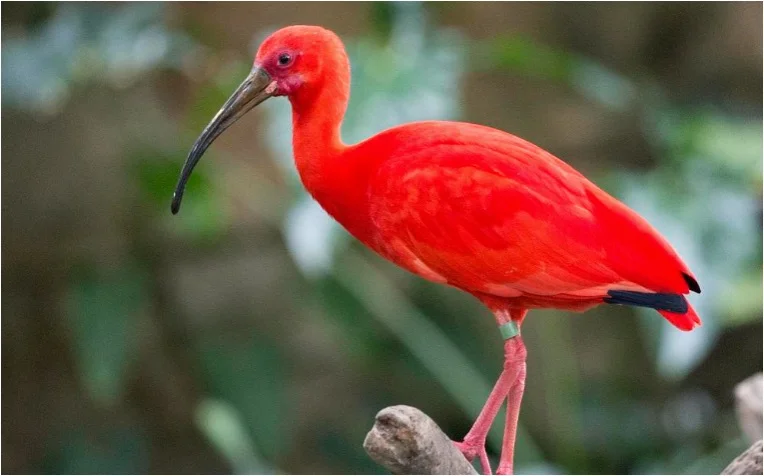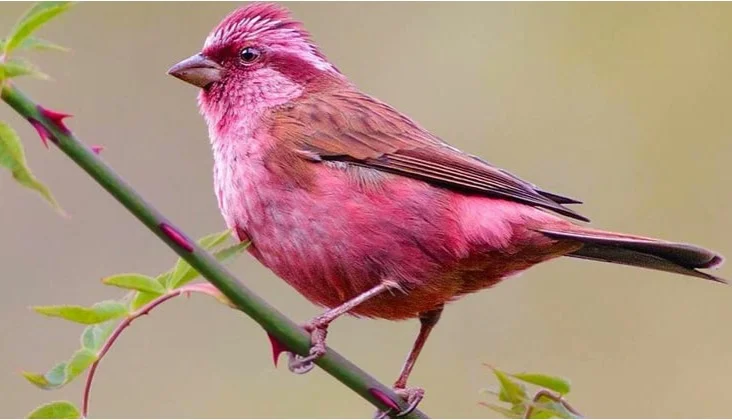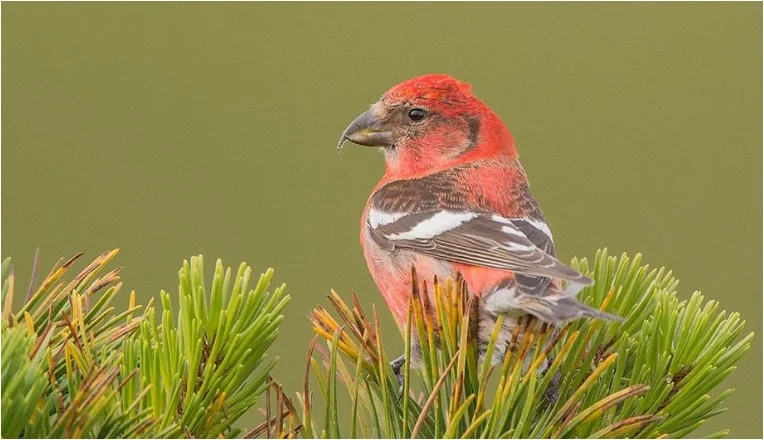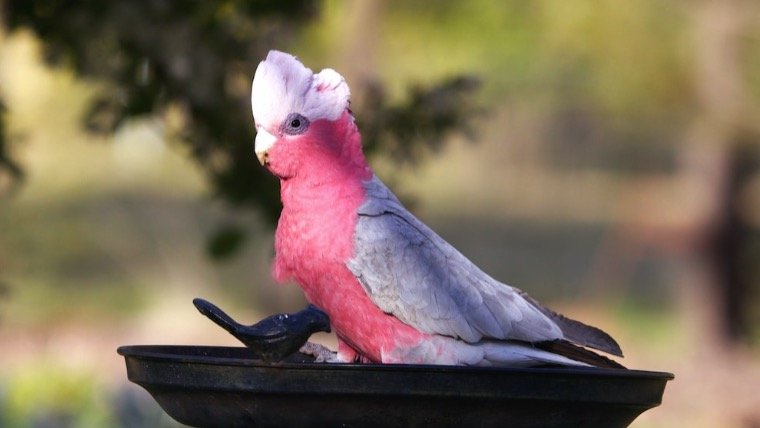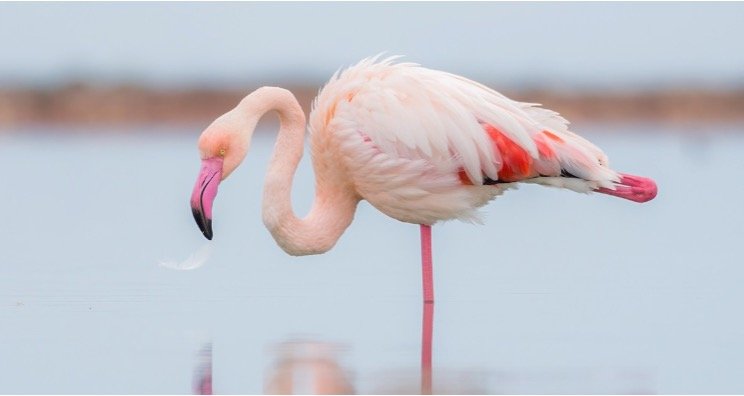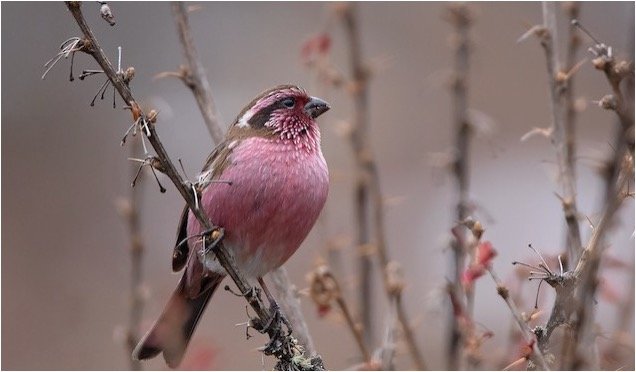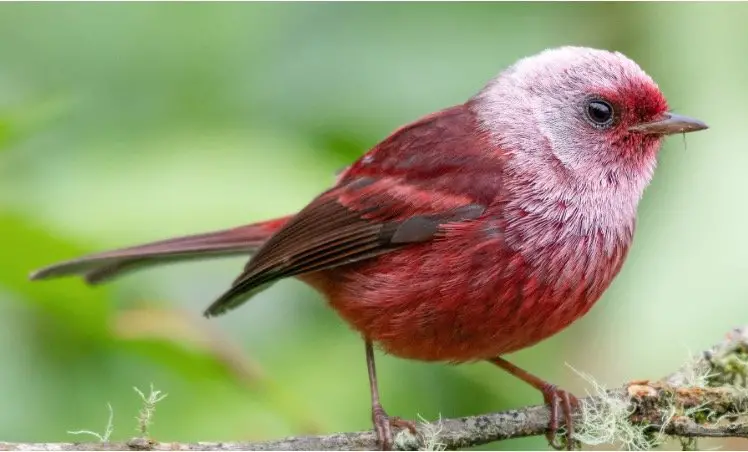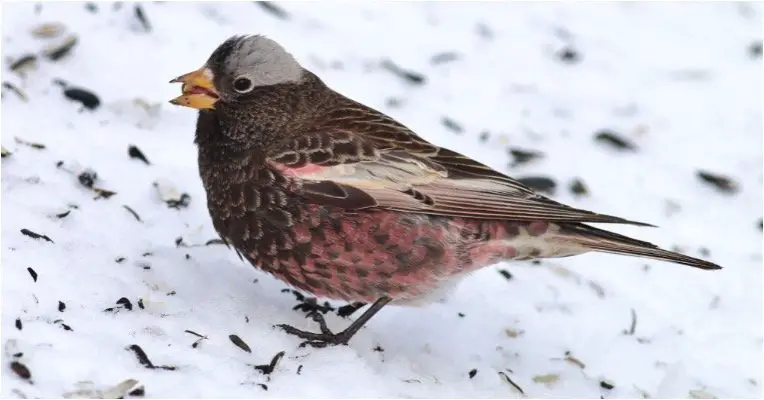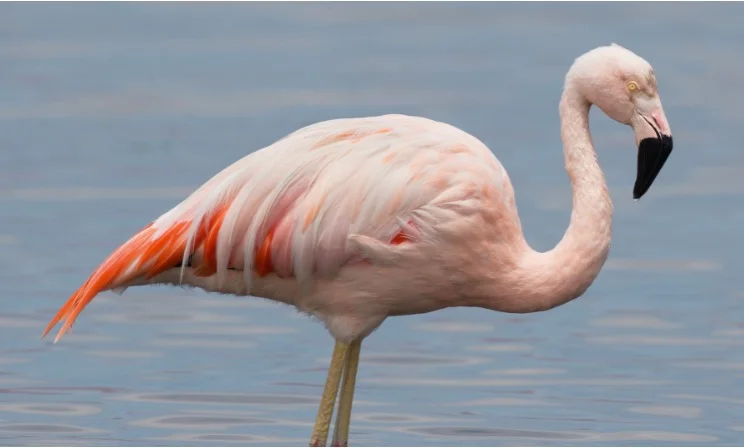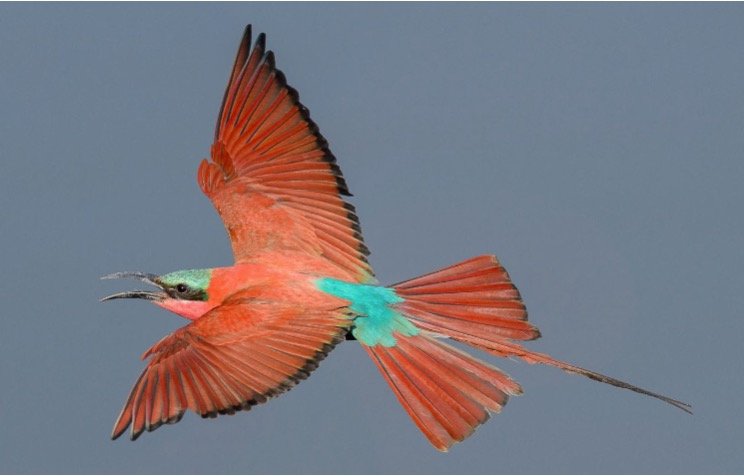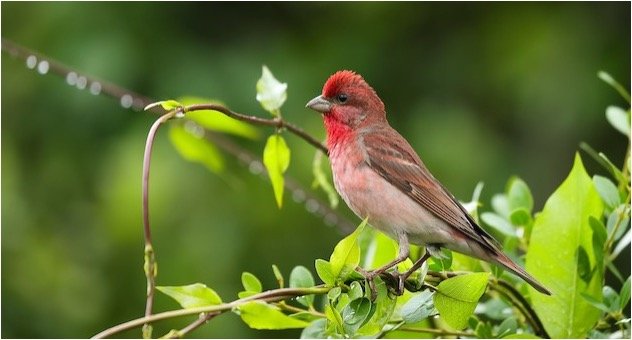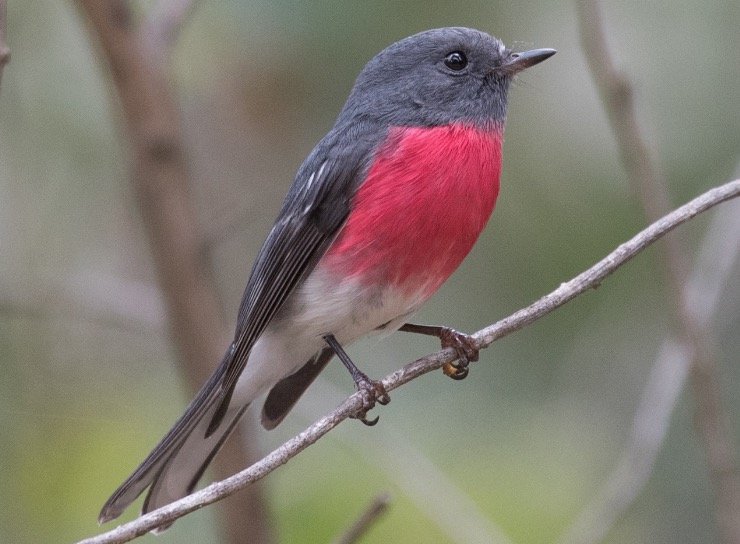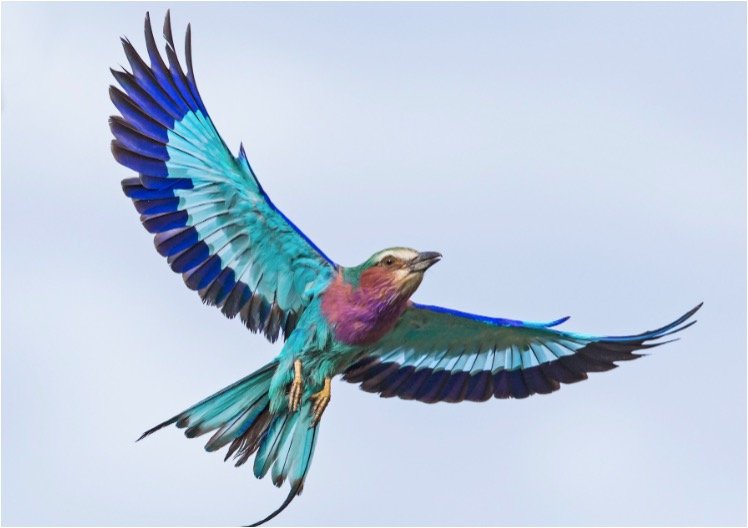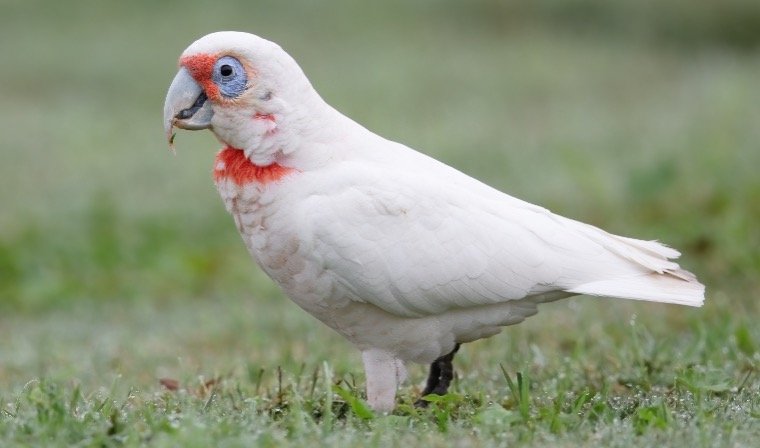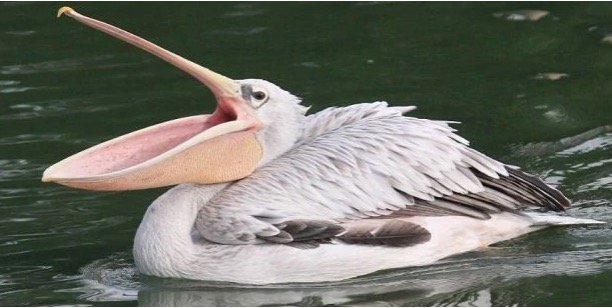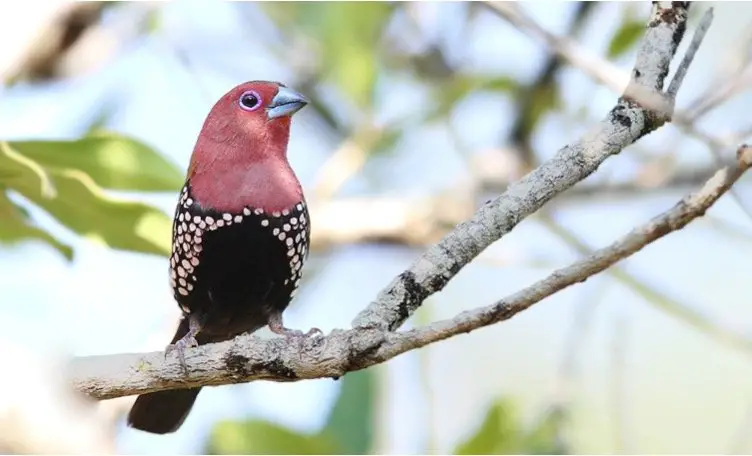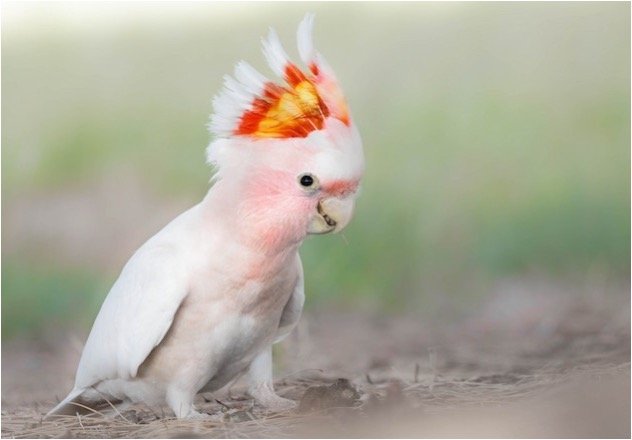24 Pink Birds
Pink birds are a stunning and diverse group of avian species distinguished by their distinctive pink plumage. They can be found all over the world in a variety of habitats, including forests, grasslands, wetlands, and deserts.
We’ll look at 24 fascinating pink birds in this article, including their scientific names, physical characteristics, preferred habitats, favorite foods, and how to attract them.
List of 24 Pink Birds
- Pink robin
- Roseate spoonbill
- American flamingo
- Pine grosbeak
- Pink-headed fruit dove
- Scarlet ibis
- Rosefinches
- Two-barred crossbill
- Galah
- Greater flamingo
- Himalayan white-browed rosefinch
- Pink-headed warbler
- Black rosy finch
- Chilean flamingo
- Southern carmine bee-eater
- Common rosefinch
- Pink-browed rosefinch
- Rose robin
- Lilac-breasted roller
- Northern carmine bee-eater
- Long-billed corella
- Pink-backed pelican
- Pink-throated twinspot
- Pink Cockatoo
1. Pink Robin (Petroica rodinogaster)
- Length: 13 cm
- Weight: 10-14 g
- Wingspan: 20-25 cm
- Favorite Food: Insects
- Habitat: Rainforests, woodlands, and heathlands
- How to Attract: Provide food and water sources, as well as nest boxes and shrubs for cover.
The Pink Robin is a small passerine bird native to Australia’s southeast, including Tasmania. The male Pink Robin has a pink breast and belly, as the name suggests, while the female has a grey-brown breast and belly. The male and female both have a distinctive pinkish-red patch above their beak.
2. Roseate Spoonbill (Platalea ajaja)
- Length: 81-94 cm
- Weight: 1.2-1.8 kg
- Wingspan: 120-133 cm
- Favorite Food: Fish and crustaceans
- Habitat: Coastal marshes, mangrove swamps, and wetlands
- How to Attract: Maintain clean water sources and provide nesting platforms in wetland areas.
The Roseate Spoonbill is a large wading bird that can be found from the southeastern United States to South America. It has a distinct appearance, with a pink and white feathered body and a long, spoon-shaped bill for sifting through mud for food.
3. American Flamingo (Phoenicopterus ruber)
- Length: 110-150 cm
- Weight: 2-4 kg
- Wingspan: 140-165 cm
- Favorite Food: Small crustaceans, algae, and aquatic plants
- Habitat: Shallow coastal lagoons, salt pans, and estuaries
- How to Attract: Create shallow ponds with ample mudflats and vegetation.
The American Flamingo is a large bird that is found in the Caribbean, the Yucatan Peninsula, and the Galapagos Islands. It has bright pink feathers and a distinctive downward-curving bill that it uses to filter small organisms from shallow water.
4. Pine Grosbeak (Pinicola enucleator)
- Length: 18-21 cm
- Weight: 40-58 g
- Wingspan: 30-35 cm
- Favorite Food: Conifer seeds and insects
- Habitat: Coniferous forests
- How to Attract: Provide bird feeders with sunflower seeds and other mixed seeds.
The Pine Grosbeak is a medium-sized finch found throughout northern North America, Europe, and Asia. The male has a bright pink-red breast, head, and back plumage, whereas the female has a duller yellow-green color.
5. Pink-headed Fruit Dove (Ptilinopus porphyreus)
- Length: 20 cm
- Weight: 70-80 g
- Wingspan: 25-30 cm
- Favorite Food: Fruits and seeds
- Habitat: Lowland rainforests
- How to Attract: Provide fruit trees and dense vegetation for nesting and feeding.
The Pink-headed Fruit Dove is a small bird that is found in the rainforests of Southeast Asia. It has a pink head and upper breast, with green wings and a yellow belly.
6. Scarlet Ibis (Eudocimus ruber)
- Length: 55-63 cm
- Weight: 650-800 g
- Wingspan: 95-105 cm
- Favorite Food: Crustaceans, insects, and small fish
- Habitat: Mangrove swamps and coastal mudflats
- How to Attract: Create wetland areas with shallow water and mudflats for feeding.
The Scarlet Ibis is a large wading bird native to South and Central America, the Caribbean, and parts of North America. It has bright scarlet feathers and a long, curved bill for probing the mud for food.
7. Rosefinches (Carpodacus spp.)
- Length: 15-17 cm
- Weight: 20-28 g
- Wingspan: 25-30 cm
- Favorite Food: Seeds and insects
- Habitat: Open woodlands and meadows
- How to Attract: Provide bird feeders with mixed seeds and sunflower seeds.
Rosefinches are a species of small passerine bird found in the Northern Hemisphere. They are distinguished by their pink or red plumage, particularly on the breast and head. Rosefinches are classified into several species, including the Common Rosefinch and the Pink-browed Rosefinch.
8. Two-barred Crossbill (Loxia leucoptera)
- Length: 15-17 cm
- Weight: 23-33 g
- Wingspan: 28-32 cm
- Favorite Food: Conifer seeds
- Habitat: Coniferous forests
- How to Attract: Provide bird feeders with mixed seeds and sunflower seeds.
The Two-barred Crossbill is a small finch found in North American and European boreal forests. It has a distinctive crossed bill for extracting seeds from conifer cones. The male is bright pink-red in color, while the female is a duller yellow-green.
9. Galah (Eolophus roseicapilla)
- Length: 35-36 cm
- Weight: 270-350 g
- Wingspan: 60-65 cm
- Favorite Food: Seeds and fruits
- Habitat: Open woodlands
- How to Attract: Provide bird feeders with mixed seeds and fruit, as well as nesting boxes.
The Galah is a medium-sized parrot native to Australia. It is also known as the Rose-breasted Cockatoo. Its plumage is pink and grey, with a distinctive crest on its head.
10. Greater Flamingo (Phoenicopterus roseus)
- Length: 110-150 cm
- Weight: 2-4 kg
- Wingspan: 140-165 cm
- Favorite Food: Small crustaceans, algae, and aquatic plants
- Habitat: Shallow coastal lagoons, salt pans, and estuaries
- How to Attract: Create shallow ponds with ample mudflats and vegetation.
The Greater Flamingo is a large wading bird found in Africa, southern Europe, and Asia. It has bright pink feathers and a long, thin neck and legs for wading in shallow water.
11. Himalayan White-browed Rosefinch (Carpodacus thura)
- Length: 14-15 cm
- Weight: 17-24 g
- Wingspan: 22-26 cm
- Favorite Food: Seeds and insects
- Habitat: Alpine and subalpine regions
- How to Attract: Provide bird feeders with mixed seeds and sunflower seeds, as well as shrubs for cover.
White-browed Himalayan The rosefinch is a small passerine bird found in South Asia’s Himalayan region. It has pinkish-red plumage on its breast and head, as well as a prominent white brow.
12. Pink-headed Warbler (Cardellina versicolor)
- Length: 10-11 cm
- Weight: 8-9 g
- Wingspan: 17-20 cm
- Favorite Food: Insects
- Habitat: Cloud forests
- How to Attract: Provide bird feeders with mealworms and small insects, as well as dense vegetation for cover.
The Pink-headed Warbler is a small songbird that is found in the cloud forests of Central America. It has a bright pink head and chest, with green wings and a yellow belly.
13. Black Rosy Finch (Leucosticte atrata)
- Length: 15-16 cm
- Weight: 18-28 g
- Wingspan: 27-30 cm
- Favorite Food: Seeds and insects
- Habitat: Alpine and subalpine regions
- How to Attract: Provide bird feeders with mixed seeds and sunflower seeds, as well as shrubs for cover.
The Black Rosy Finch is a small finch found in western North American mountains. Its plumage is black and pink, with a white patch on its wings.
14. Chilean Flamingo (Phoenicopterus chilensis)
- Length: 110-130 cm
- Weight: 2-3.5 kg
- Wingspan: 140-165 cm
- Favorite Food: Small crustaceans, algae, and aquatic plants
- Habitat: Shallow coastal lagoons, salt pans, and estuaries
- How to Attract: Create shallow ponds with ample mudflats and vegetation.
The Chilean Flamingo is a large wading bird found in South America, particularly in the Andes Mountains and Patagonia. It has a pink and white feathered body and a curved bill for filtering small organisms from the water.
15. Southern Carmine Bee-eater (Merops nubicoides)
- Length: 25-28 cm
- Weight: 50-60 g
- Wingspan: 35-40 cm
- Favorite Food: Insects
- Habitat: Savannas and open woodlands
- How to Attract: Provide bird feeders with mealworms and small insects, as well as nesting boxes.
The Southern Carmine Bee-eater is a brightly colored bird found in Sub-Saharan Africa. Its belly is a bright pink-red color, with a blue-green head and back.
16. Common Rosefinch (Carpodacus erythrinus)
- Length: 14-16 cm
- Weight: 16-27 g
- Wingspan: 24-28 cm
- Favorite Food: Seeds and insects
- Habitat: Open woodlands and meadows
- How to Attract: Provide bird feeders with mixed seeds and sunflower seeds.
The Common Rosefinch is a small passerine bird native to Eurasia. It has pinkish-red breast and head plumage, brown wings, and a streaked back.
17. Pink-browed Rosefinch (Carpodacus rodochroa)
- Length: 14-16 cm
- Weight: 16-27 g
- Wingspan: 24-28 cm
- Favorite Food: Seeds and insects
- Habitat: Alpine and subalpine regions
- How to Attract: Provide bird feeders with mixed seeds and sunflower seeds, as well as shrubs for cover.
The Pink-browed Rosefinch is a small passerine bird that is found in the Himalayas and other mountainous areas of South Asia. It has a pinkish-red plumage on its breast and head, with a distinctive pink eyebrow.
18. Rose Robin (Petroica rosea)
- Length: 13-14 cm
- Weight: 11-12 g
- Wingspan: 20-25 cm
- Favorite Food: Insects
- Habitat: Wet forests and rainforests How to Attract: Provide bird feeders with mealworms
The Rose Robin is a small songbird native to Australia and Papua New Guinea. It has a pinkish-red breast and belly, grey wings, and a white patch on the top of its head.
19. Lilac-breasted Roller (Coracias caudatus)
- Length: 35-36 cm
- Weight: 140-190 g
- Wingspan: 65-75 cm
- Favorite Food: Insects, small mammals, reptiles, and birds
- Habitat: Savannas, grasslands, and open woodlands
- How to Attract: Provide bird feeders with mealworms and small insects, as well as nesting boxes.
The Lilac-breasted Roller is a brightly colored bird found in Sub-Saharan Africa. It is pinkish-red on the breast and belly, with blue-green wings and a lilac throat.
27 Small Birds In Florida: Identification With Pictures & Songs
20. Northern Carmine Bee-eater (Merops nubicus)
- Length: 28-30 cm
- Weight: 50-60 g
- Wingspan: 45-50 cm
- Favorite Food: Insects
- Habitat: Savannas and open woodlands
- How to Attract: Provide bird feeders with mealworms and small insects, as well as nesting boxes.
The Northern Carmine Bee-eater is a brightly colored bird found in Asia and Africa. Its belly is a bright pink-red color, with a blue-green head and back.
21. Long-billed Corella (Cacatua tenuirostris)
- Length: 35-41 cm
- Weight: 500-600 g
- Wingspan: 65-75 cm
- Favorite Food: Seeds, nuts, fruits, and insects
- Habitat: Open woodlands and grasslands
- How to Attract: Provide bird feeders with mixed seeds and nuts, as well as nesting boxes.
The Long-billed Corella is a medium-sized parrot native to Australia. Its plumage is pink and grey, and it has a long, curved bill.
22. Pink-backed Pelican (Pelecanus rufescens)
- Length: 125-155 cm
- Weight: 4-7 kg
- Wingspan: 240-280 cm
- Favorite Food: Fish and crustaceans
- Habitat: Freshwater lakes and rivers
- How to Attract: Create shallow ponds with ample fish and vegetation.
The Pink-backed Pelican is a large water bird found in Africa, particularly along the Nile River and Lake Victoria. It has a pink and white feathered body, as well as a distinct pink patch on its back.
23. Pink-throated Twinspot (Hypargos margaritatus)
- Length: 10-11 cm
- Weight: 6-8 g
- Wingspan: 16-17 cm
- Favorite Food: Insects and small fruits
- Habitat: Woodlands and forest edges
- How to Attract: Provide bird feeders with mealworms and small insects, as well as shrubs for cover.
Pink-throated Twinspot is a small passerine bird found throughout Sub-Saharan Africa. It has brown wings and a streaked back, as well as a pinkish-red breast and throat.
24. Pink Cockatoo (Lophochroa leadbeateri)
- Length: 32-35 cm
- Weight: 300-400 g
- Wingspan: 55-60 cm
- Favorite Food: Seeds, nuts, and fruits
- Habitat: Open woodlands and forests
- How to Attract: Provide bird feeders with mixed seeds and nuts, as well as nesting boxes.
The Pink Cockatoo, also known as the Major Mitchell’s Cockatoo, is a large parrot native to Australia. Its plumage is pink and white, with a distinctive crest on its head.
